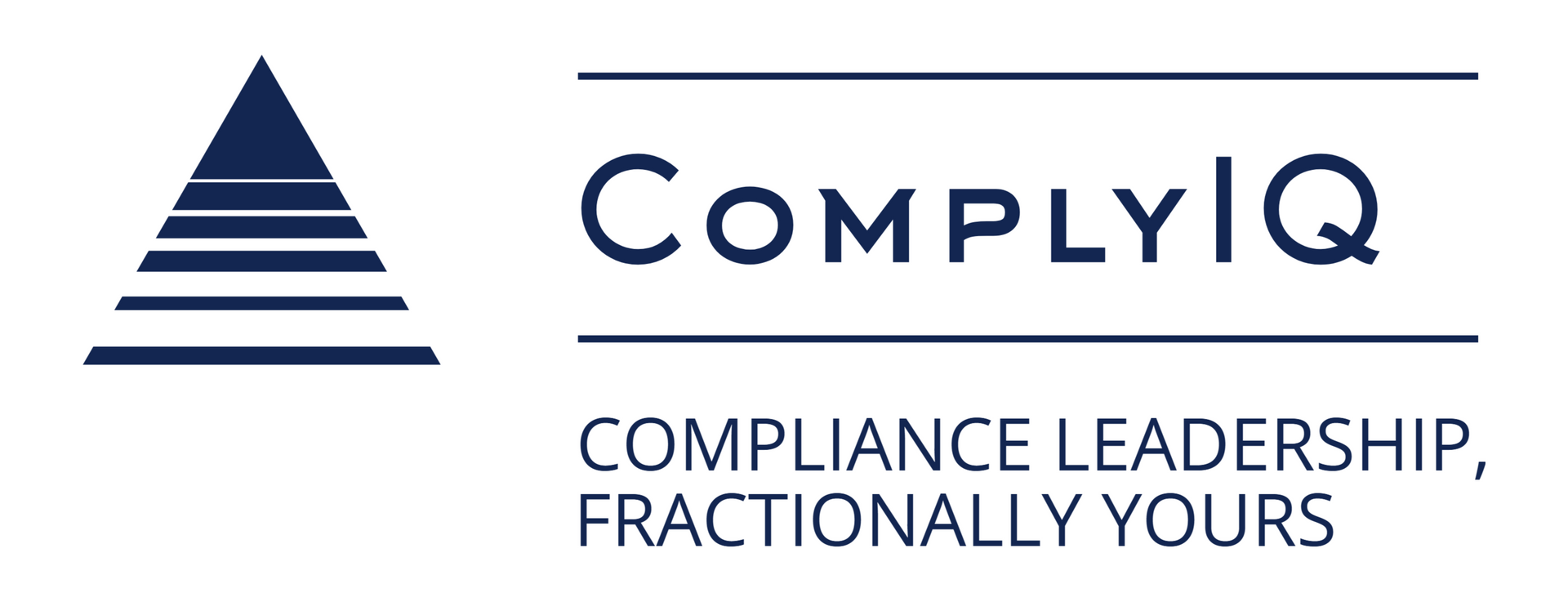Agentic AI Risk Management Strategies
Learn practical Agentic AI Risk Management Strategies to build continuous monitoring, accountability, and rapid response for fintechs. Includes CAIRN framework and rollout roadmap.
Introduction
AI makes decisions. Are you ready?
These sophisticated algorithms can approve loans, detect fraud, and execute trades without human intervention. They're learning and adapting in real-time, affecting millions of customers daily.
Here's the problem: most organizations use traditional risk management approaches designed for static models. This creates dangerous compliance gaps that could cost you millions in fines and lost business.
Agentic AI introduces unique challenges like continuous learning, unpredictable decision paths, and real- time adaptation that existing approaches can't address. The consequences of getting this wrong are severe.
The Agentic AI Risk Landscape
Key Risk Categories
Agentic AI systems present fundamentally different risk profiles than traditional predictive models. Here's what keeps compliance officers awake at night.
Algorithmic bias emerges dynamically as these systems continuously learn from new data. Unlike static models tested once, these systems can develop discrimination overnight that wasn't present during initial deployment.
Meet Sarah, a fintech COO who discovered her loan approval system had suddenly started rejecting 40% more applications from specific zip codes. The change happened overnight. Her traditional quarterly review process would have missed this bias for months, potentially exposing her company to millions in fair lending violations.
Model drift occurs at lightning speed when AI agents adapt their decision-making based on environmental feedback. Unlike static models that degrade predictably over time, agentic systems can shift behavior patterns within hours.
Data privacy vulnerabilities multiply when autonomous agents access and combine information across multiple systems. These systems often make decisions using data combinations that weren't explicitly approved. This creates unexpected GDPR or state privacy law violations that traditional privacy impact assessments miss completely.
Regulatory compliance becomes exponentially more complex when auditors can't trace decision paths.
Traditional model validation assumes repeatable processes, but agentic AI may use different reasoning for similar cases.
Regulatory Pressure Points
The CFPB has made clear that existing consumer protection laws apply fully to AI-driven decisions. This means your agentic systems must provide explainable adverse action notices and demonstrate fair lending compliance, even when their decision processes are opaque.
Think of it like this: if a human loan officer had to explain every rejection, your AI must do the same. But your AI might be considering 500 variables simultaneously.
OCC guidance on model risk management requires banks to validate and monitor all automated decision systems. Agentic AI challenges traditional validation approaches because these systems modify themselves continuously.
State-level AI disclosure requirements are emerging rapidly. California's proposed AI transparency laws would require financial institutions to disclose when AI systems make material decisions about consumers.
The EU AI Act creates extraterritorial compliance obligations for US fintech companies serving European customers. High-risk AI classifications trigger mandatory conformity assessments and CE marking requirements.
This is where ComplyIQ's fractional CCO services become vital for your organization. Most fintech compliance teams lack the specialized expertise to navigate the intersection of AI capabilities and traditional financial services regulations. Our Fortune 500 compliance background helps organizations establish governance systems that satisfy regulatory expectations while preserving innovation velocity.
The CAIRN System for Agentic AI Risk Management
Traditional risk management approaches fail for agentic AI because they assume static, predictable systems. The CAIRN system addresses the unique challenges of autonomous, adaptive AI systems through four integrated pillars. Think of CAIRN as your GPS through the complex terrain of AI compliance.
C - Continuous Monitoring
Real-time performance tracking becomes mission-important when AI agents can modify their behavior between regulatory examinations. You need automated dashboards that track key performance indicators across multiple dimensions simultaneously.
Here's what this looks like in practice: Your fraud detection AI suddenly flags 40% more transactions from a specific zip code. Traditional monitoring might catch this during the next quarterly review. Continuous monitoring catches it within hours.
ML observability platforms can detect statistical shifts in decision patterns before they impact customers. Set up alerts when approval rates, demographic distributions, or risk scores deviate beyond predetermined thresholds.
Bias detection protocols must operate continuously rather than during periodic reviews. Deploy fairness metrics that automatically flag when protected class outcomes diverge from baseline performance.
Escalation procedures should trigger automatically when anomalies exceed your risk tolerance. Define clear thresholds for suspending autonomous operations and reverting to human oversight.
A - Accountability Structures
Clear ownership assignment becomes more complex when AI agents make thousands of decisions daily across multiple business lines. You need to designate specific executives accountable for AI-driven outcomes in their domains, with regular reporting to the board risk committee. Cross-functional governance committees must include representatives from compliance, risk, technology, and business units.
Decision-making processes require enhanced documentation when AI agents operate independently. Implement logging systems that capture not just final decisions, but the reasoning paths and data inputs that influenced each outcome.
Human oversight checkpoints should be embedded at key decision points. For high-value transactions or vulnerable populations, require human validation before AI recommendations become final actions.
I - Impact Assessment
Pre-deployment risk assessments must consider scenarios that traditional testing misses. Agentic AI can discover new patterns in data that create unexpected outcomes. Use stress testing scenarios that simulate various market conditions and customer behaviors.
Customer harm scenarios require more sophisticated modeling when AI agents can combine decisions across multiple touchpoints. A customer rejected for one product might be automatically excluded from others, creating compound impacts that weren't intended by individual algorithms.
Regulatory compliance implications multiply when AI decisions span multiple jurisdictions or product lines. Map each agentic system's decision scope against applicable regulations, including state licensing requirements and federal fair lending obligations.
Calculate potential financial exposure from regulatory violations, including restitution and penalty risks.
R - Response Protocols
Incident response playbooks for agentic AI must address scenarios that don't exist with traditional systems.
When an autonomous agent makes a series of problematic decisions, you have minutes, not hours, to respond because damage accumulates rapidly.
Model rollback procedures should be executable within minutes, not hours. Pre-configure fallback systems that can assume decision-making responsibilities when primary agentic systems are suspended.
Customer communication templates must address AI-specific concerns. Customers increasingly ask whether AI made decisions about their accounts. Prepare transparent explanations that comply with adverse action requirements while maintaining customer confidence.
Regulatory notification workflows should trigger automatically when agentic systems experience significant failures. Compliance experience becomes particularly valuable during response scenarios. We help organizations balance transparency requirements with legal privilege considerations, ensuring regulatory communications protect both customers and the institution.
Implementation Roadmap
Phase 1: Foundation Building
Audit existing AI governance capabilities using the NIST AI RMF 1.0 as a baseline. Most organizations discover significant gaps between their current risk management practices and the requirements for autonomous systems.
Map current regulatory requirements across all jurisdictions where your AI systems operate. Include federal banking regulations, state licensing requirements, and international obligations for cross-border operations.
Identify skill gaps in compliance teams through structured assessments. Traditional compliance
professionals often lack technical AI knowledge, while data scientists may not understand regulatory requirements.
Establish baseline risk metrics that capture both traditional model performance and agentic-specific behaviors.
Phase 2: System Deployment
Install monitoring and alerting systems that integrate with existing risk infrastructure. Avoid creating separate monitoring silos that compliance teams can't interpret.
Staff training must address both technical and regulatory aspects of agentic AI governance. Compliance officers need enough technical understanding to ask meaningful questions, while technologists need regulatory context to design appropriate controls.
Integration with existing risk management processes prevents governance gaps. Embed AI-specific controls into current committee structures, reporting processes, and audit procedures.
Documentation and policy updates should reflect the dynamic nature of agentic systems. Traditional model policies assume periodic review cycles, but autonomous AI requires continuous governance approaches.
Phase 3: Enhancement and Scaling
Refine monitoring thresholds based on operational experience with your specific AI systems and customer populations. Initial settings are often too sensitive or too permissive, generating either alert fatigue or missing important signals. System expansion to additional AI use cases becomes more efficient once core capabilities are established.
Automated compliance reporting reduces manual effort while improving accuracy. Generate regulatory reports that demonstrate continuous monitoring and proactive risk management. Stakeholder confidence building through transparent reporting creates competitive advantages. Board members, regulators, and customers increasingly expect sophisticated AI governance.
Common Implementation Pitfalls
Treating AI risk as a purely technical challenge ignores the regulatory reality that compliance failures have business consequences.
Here's what this looks like: Your data science team builds sophisticated bias detection algorithms, but they don't understand fair lending requirements. The result is technically sound monitoring that misses legally significant discrimination patterns.
Siloed governance approaches fail when agentic systems operate across business lines. Risk management, compliance, and technology teams must collaborate continuously rather than coordinating during quarterly reviews.
Inadequate documentation creates examination risks even when controls are effective. Regulators expect to trace decision processes and governance activities. Delayed regulatory engagement compounds problems when issues eventually surface. Financial services regulators prefer proactive communication about AI governance challenges rather than reactive notification after problems emerge.
Industry data shows that 73% of financial institutions underestimate the compliance complexity of agentic AI systems. Those that implement governance systems reactively spend 3x more on remediation than organizations that build controls proactively.
Many organizations also make the mistake of trying to retrofit existing model risk management policies for agentic systems. This approach misses the fundamental differences in how these systems operate and the unique risks they create.
The biggest pitfall is assuming that traditional vendor management approaches work for AI systems. When your AI vendor's model updates automatically, your risk profile changes without your direct knowledge or approval.
Measuring Success
Key performance indicators for agentic AI risk management must capture both operational effectiveness and regulatory readiness. Track metrics like mean time to anomaly detection, explanation quality scores, and stakeholder confidence surveys alongside traditional model performance measures.
Regulatory readiness benchmarks should include examination preparedness assessments and documentation completeness scores. Conduct periodic mock examinations that test both technical controls and governance processes.
Incident response effectiveness requires measurement across multiple dimensions: detection speed, containment time, customer impact mitigation, and regulator communication quality.
Stakeholder confidence metrics capture the business value of strong governance. Survey board members, customers, and business partners about their comfort with AI-driven decisions.
This measurement complexity is why many organizations turn to specialized expertise. Fractional CCO services bridge the gap between AI deployment and traditional financial services compliance requirements that most internal teams lack bandwidth to navigate effectively.
Conclusion
Agentic AI risk management requires fundamentally different approaches than traditional model governance. The CAIRN system provides a practical path forward that addresses regulatory requirements while preserving innovation capabilities.
Organizations that implement proactive governance systems gain competitive advantages through faster product deployment and stronger stakeholder confidence. Those that wait for regulatory enforcement face significantly higher remediation costs and operational disruptions.
Every day you delay puts you further behind competitors who are already building these capabilities. Start your implementation planning now, before regulatory pressure intensifies. Fractional CCO services can help you navigate the complex intersection of AI innovation and financial services compliance.
Frequently Asked Questions
How complex is implementing agentic AI governance systems? Implementation complexity varies by organization size and AI sophistication. Most institutions need 6-12 months to fully deploy the CAIRN system, with foundational elements operational within 90 days.
What are current regulatory expectations for AI risk management? Regulators expect the same risk management rigor for AI systems as traditional processes. This includes model validation, ongoing monitoring, and clear accountability structures adapted for autonomous systems.
What resources are required for effective implementation? Resource requirements depend on AI deployment scale. Typical implementations require 2-3 FTE across risk, compliance, and technology functions, plus specialized governance tools and training programs.
How does this integrate with existing compliance programs? The CAIRN system enhances rather than replaces current risk management processes. Integration focuses on extending existing governance structures to address agentic AI's unique characteristics.
What are the cost-benefit considerations for risk management investments? Proactive governance costs typically represent 5-10% of AI development budgets but prevent remediation expenses that average 300% of initial implementation costs when problems emerge.











